|
 Are Most Pulsars Really Magnetars In Disguise
Are Most Pulsars Really Magnetars In DisguiseParis, France (ESA) Oct 21, 2010 Astronomers using XMM-Newton and other world-class X-ray telescopes have probed a curious source, which emits flares and bursts just like a magnetar but lacks the extremely high external magnetic field typical of these objects. The detection of this source, which could be powered by a strong, internal magnetic field hidden to observations, may mean that many 'ordinary' pulsars are dormant magnetars waiting to erupt. Massive stars remain objects of curiosity even well after their demise. Endi ... read more |
. |
|
|
Free Space, Earth, Energy And Military Newsletters - Delivered Daily |
| . | . |
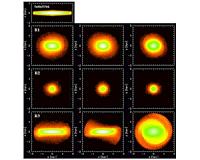 Astronomer Employs HPC To Peer Into Cosmic Mysteries An Ohio State University astronomer is working to unlock some of the mysteries surrounding the formation of vast galaxies and the evolution of massive black holes with his own large constellation of ... more | .. |
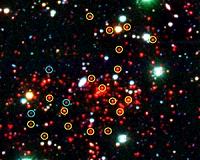 Massive Early Galaxy Cluster Observed Astronomers using the South Pole Telescope report that they have discovered the most massive galaxy cluster yet seen at a distance of 7 billion light-years. The cluster (designated SPT-CL J0546-5345 ... more | .. |
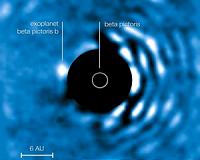 Planet Hunters No Longer Blinded By The Light Using new optics technology developed at the University of Arizona's Steward Observatory, an international team of astronomers has obtained images of a planet on a much closer orbit around its paren ... more | .. |
 Astronomers Find Weird, Warm Spot On An Exoplanet Observations from NASA's Spitzer Space Telescope reveal a distant planet with a warm spot in the wrong place. The gas-giant planet, named upsilon Andromedae b, orbits tightly around its star, with o ... more | .. |
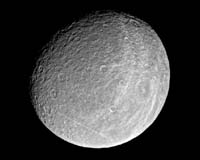 Cassini Clocks Nine Moons In 62 Hours Taking a long-weekend road trip, NASA's Cassini spacecraft successfully glided near nine Saturnian moons, sending back a stream of raw images as mementos of its adrenaline-fueled expedition. The spa ... more |
|
Free Space, Earth, Energy And Military Newsletters - Delivered Daily |
| .. |
New techniqe aiding planet searches Tucson (UPI) Oct 18, 2010
Tucson (UPI) Oct 18, 2010 Astronomers in Chile say they've obtained images of a planet in a much closer orbit around its parent star than any other extrasolar planet previously found. The discover was made possible by technology developed at the University of Arizona that blocks out certain parts of a star's light, allowing planets to be spotted from signals previously drowned out by the star's glare, ScienceDai ... more NASA to buy private moon data  Washington (UPI) Oct 18, 2010
Washington (UPI) Oct 18, 2010 NASA has signed contracts with U.S. six teams competing to design, build and launch private moon probes to purchase their lunar data, agency officials say. The six teams are competing in the Google Lunar X Prize contest to send low-cost missions to the lunar surface, SPACE.com reported. "The dollar values may be a relatively small contract by NASA standards, but these contracts s ... more Antarctic search for cosmic rays is on  Madison, Wis. (UPI) Oct 18, 2010
Madison, Wis. (UPI) Oct 18, 2010 A "telescope" deep under Antarctica's ice has found the first signals scientists say may explain mysterious particles that shower the Earth from outer space. Researchers, hoping to explain what produces cosmic rays and elusive particles called neutrinos that constantly bombard our planet, buried sensors a mile below the Antarctica's ice cap to detect fleeting flashes of light caused whe ... more |
.. |
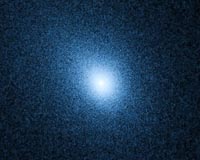 Hartley 2 Visible In Night Sky 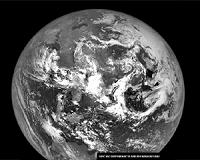 The Earth Is Not Round  Instant online solar energy quotes Solar Energy Solutions from ABC Solar |
.. |
|
|
Free Space, Earth, Energy And Military Newsletters - Delivered Daily |
|
|
. |
 Raining Halley
Raining HalleyHuntsville AL (SPX) Oct 19, 2010 The most famous of all comets, Comet Halley is noted for producing spectacular displays when it passes near Earth on its 76-year trip around the sun. However, you don't have to wait until 2061 to see a piece of the comet - you can do it this very week! Halley's Comet leaves bits of itself behind - in the form of small conglomerates of dust and ice called meteoroids - as it moves in its orbit, which the Earth approaches in early May and mid-October. When it does, it collides with these bits o ... read more |
| The contents herein, unless otherwise known to be public domain, are Copyright 1995-2010 - SpaceDaily. AFP and UPI Wire Stories are copyright Agence France-Presse and United Press International. ESA Portal Reports are copyright European Space Agency. All NASA sourced material is public domain. Additional copyrights may apply in whole or part to other bona fide parties. Advertising does not imply endorsement, agreement or approval of any opinions, statements or information provided by SpaceDaily on any web page published or hosted by SpaceDaily. Privacy statement |
|
Free Space, Earth, Energy And Military Newsletters - Delivered Daily |
| Previous Issues | Oct 20 | Oct 19 | Oct 18 | Oct 15 | Oct 14 |